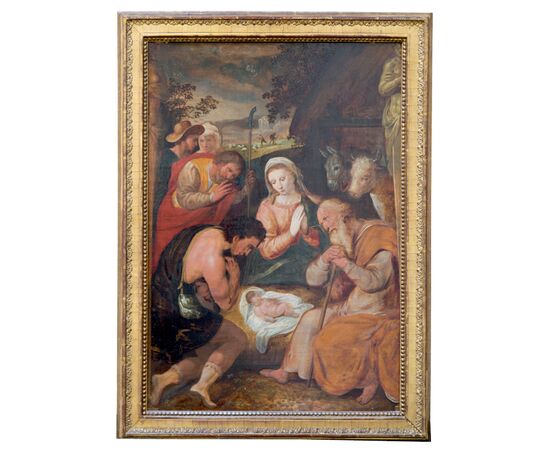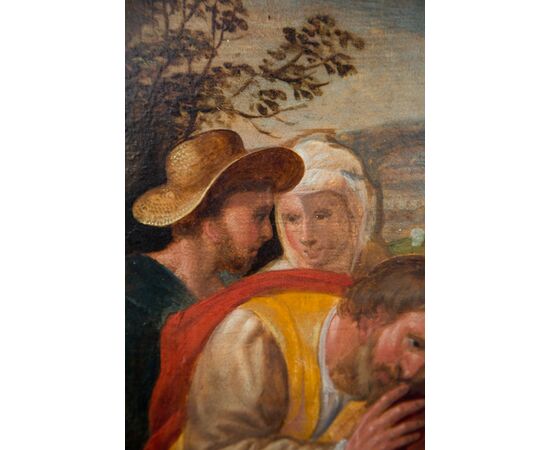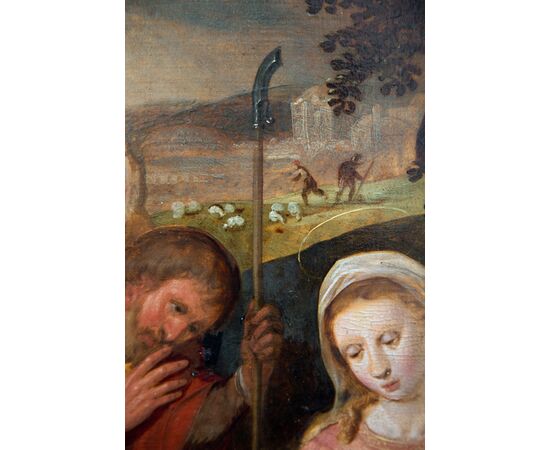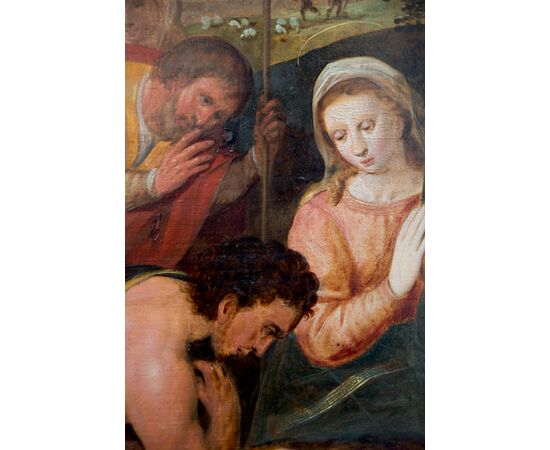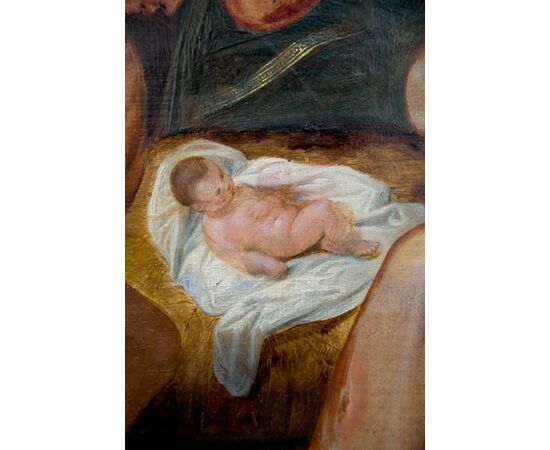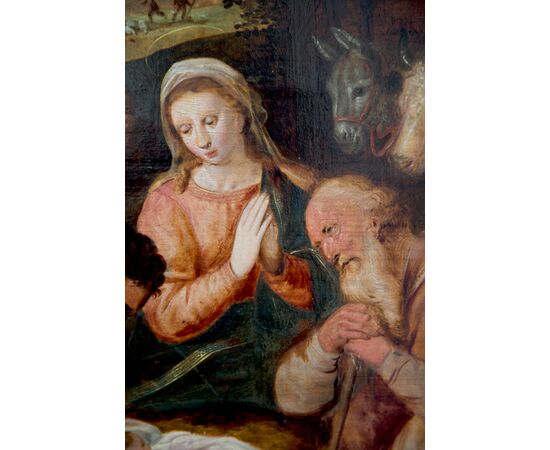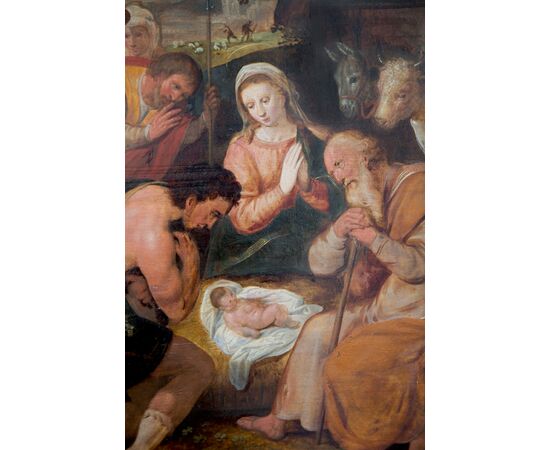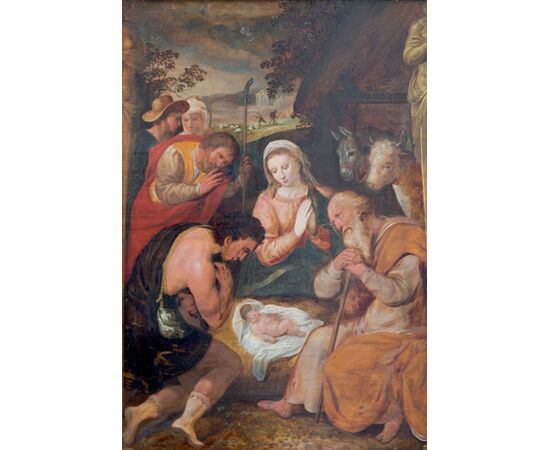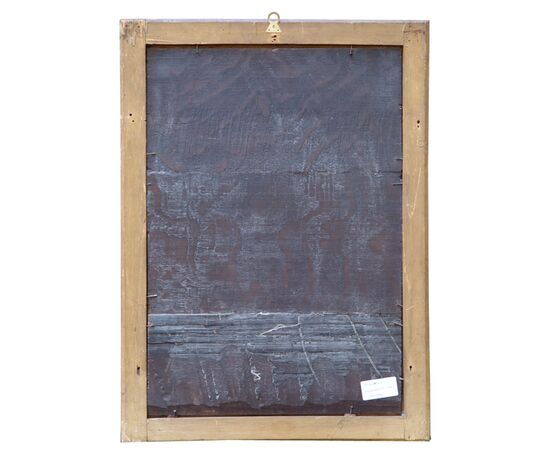Flemish School, 17th century, Adoration of the Shepherds
Flemish School, 17th century
Adoration of the Shepherds
Oil on panel, 65.5 x 45.5 cm
With frame, 73 x 54 cm
This panel belongs to the Flemish production of the first half of the seventeenth century, given the stylistic links with the previous century and the orderly layout of both the background and the arrangement of the figures. The blurred outlines and the pictorial materiality indicate a knowledge of the teachings of the new generation of Flemish painters, whose most illustrious examples that can be cited are those of Rubens and Rembrandt; however, adherence to these novelties is not total, as demonstrated, for example, by the absence of an impactful chiaroscuro, a nocturnal setting, and a relatively contrasting light source. The faces of the characters recall those present in Flemish and Nordic works but rendered in a more sweetened way, as are their poses and their arrangement within the scene. The anonymous artist thus seems to have also come into contact with other schools and with other painters from other areas of the continent, such as Italy, like other Flemish contemporaries who undertook trips to the peninsula to learn the notions and techniques of the great masters. If some took the path traced by Caravaggio, others focused on the instances of sixteenth-century Mannerism in central Italy; among the various personalities who stayed in the various Italian cities, those of Rubens (1577-1640) and Van Dyck (1599-1641) stand out, but like them, many other artists from Flanders went to Italy either for short periods or for many years, embarking on lasting careers and internalizing the stylistic traits of the great masters, as did, for example, Denijs Calvaert (1540-1619), a painter born in Antwerp and later moved to Bologna who fully embraced the art of the Emilian and Bolognese school. The Italian manner is perceived in the organised composition, in the perspective precision and in the fluidity of the drawing, which give the canvas a dense and rich colour. The expressiveness of Saint Joseph, with features similar to those of the Head of an Old Man by Rubens in Vienna, the eloquent poses of the two shepherds leaning over the Child, and the diaphanous beauty of the Virgin are neatly framed around the straw bed, while behind them the other shepherds, the glimpse of the hut and two lateral statues up to the verdant landscape with grazing sheep and the buildings of the city behind unfold in a slow degradation of the scenario that allows you to savour every part of the painting, which does not skimp on the landscape details typical of Flemish painting. The Rubensian or in any case Flemish-inspired matrix is maintained, adding harmoniously to the Italian instances, thus fully fitting into the seventeenth century and the production deriving from the great masters, such as Rubens, who knew how to collect the canons of Italian art and insert them into their own artistic repertoire.

